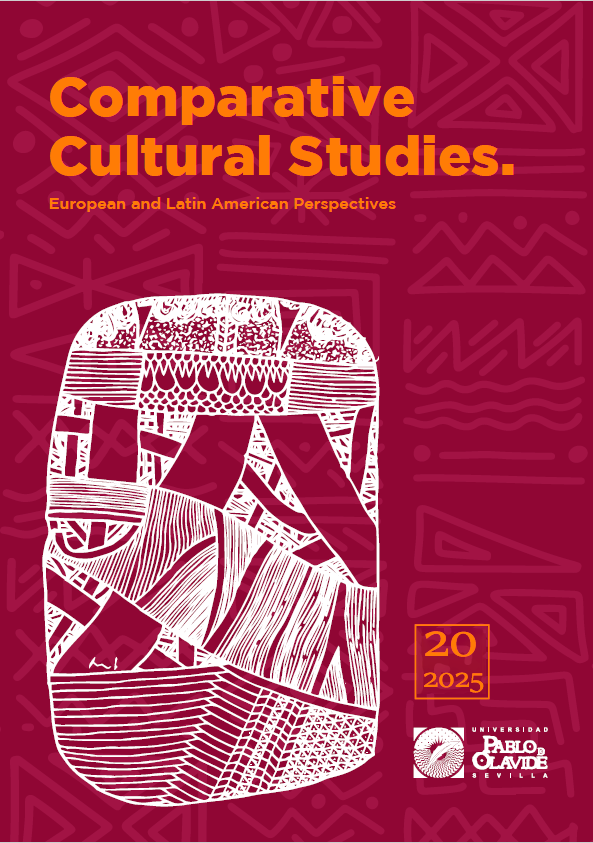The Negrita of the Yucatan Peninsula
A ritual with multiple identities
DOI:
https://doi.org/10.46661/ccselap-11902Keywords:
Festive rituals, Afro-descendants in Mexico, Ethnoracial identities, Religious syncretism, YucatánAbstract
This article analyzes the ritual surrounding La Boxita, a doll that plays a central role in a popular festivity in Hunucmá, Yucatán, during the celebration of Corpus Christi. Through an anthropological and historical lens, it explores how this female figure—crafted with Indigenous features, dark skin, and dressed in mestiza attire—embodies multiple layers of collective memory: from Afro-descendant and Indigenous presence to the symbolic construction of the Yucatecan woman. The discussion unfolds in three analytical levels: the historical construction of regional symbols, the ritual logic of destruction as purification, and the historical invisibilization of women and Afro-descendants. The article proposes that La Boxita is a liminal figure that articulates tensions between visibility and erasure, the sacred and the profane, festivity and politics, serving as a living archive of denied memories and a symbolic field of struggle.
Downloads
References
Bajtín, M. (1984). La cultura popular en la Edad Media y en el Renacimiento: El contexto de la risa. Alianza Editorial.
Bastide, R. (1996). El sincretismo religioso. Fondo de Cultura Económica.
Bourdieu, P. (1977). Outline of a theory of practice. Cambridge University Press. https://doi.org/10.1017/CBO9780511812507
Butler, J. (2001). El género en disputa. Paidós.
Campos García, M. (2011). Indios, negros y mestizos en la historia de Jalapa. Instituto Veracruzano de la Cultura.
Cumes, A. (2012). La subversión epistemológica: El género desde el pensamiento maya. IWGIA.
Cusicanqui, S. R. (2010). Ch’ixinakax utxiwa: Una reflexión sobre prácticas y discursos descolonizadores. Tinta Limón.
Espinosa Miñoso, Y. (2015). De por qué el feminismo negro, descolonial y transnacional importa hoy. En Y. Espinosa Miñoso, D. Gómez Correal & K. Ochoa Muñoz (Eds.), Tejiendo de otro modo: Feminismo, epistemología y apuestas descoloniales en Abya Yala (pp. 31–52). Editorial Universidad del Cauca.
Gudeman, S. (1986). Economía moral: Subsistencia y comercio en una comunidad colombiana. CEREC.
Halbwachs, M. (1950). La mémoire collective. Presses Universitaires de France.
Leinaweaver, J. (2008). The circulation of children: Kinship, adoption, and morality in Andean Peru. Duke University Press. https://doi.org/10.1215/9780822391500
Lévi-Strauss, C. (1969). El pensamiento salvaje. Fondo de Cultura Económica.
Nora, P. (1989). Les lieux de mémoire. Gallimard.
Ortner, S. B. (2006). Anthropology and social theory: Culture, power, and the acting subject. Duke University Press. https://doi.org/10.1215/9780822388456
Pérez Montfort, R. (2007). La construcción histórica de los símbolos de Yucatán. Instituto Mora.
Rivera Cusicanqui, S. (2015). Un mundo ch’ixi es posible: Ensayos desde un presente en crisis. Tinta Limón.
Rosenwein, B. H. (2006). Emotional communities in the early Middle Ages. Cornell University Press.
Spivak, G. C. (1997). A critique of postcolonial reason: Toward a history of the vanishing present. Harvard University Press.
Taracena, A. (2010). Notas de campo, ritual y cuerpo en América Latina. Universidad de San Carlos.
Toledo, V. M. (2001). El saber ambiental indígena: Simbolismo y práctica en la cosmovisión de los pueblos. UNAM.
Trouillot, M.-R. (1995). Silencing the past: Power and the production of history. Beacon Press.
Turner, V. (1969). The ritual process: Structure and anti-structure. Aldine Publishing.
Tzul Tzul, G. (2017). Sistemas de gobierno comunal indígena: Mujeres y tramas de parentesco en la reproducción de la vida. Editorial Pez en el Árbol. https://doi.org/10.2307/j.ctvnp0k5d.19
Van Gennep, A. (1960). The rites of passage (Original work published 1909). University of Chicago Press. https://doi.org/10.7208/chicago/9780226027180.001.0001
Wade, P. (2005). Raza como práctica y racismo como estructura. Política y Cultura, 24, 39-66.
Wade, P. (2010). Race and ethnicity in Latin America. Pluto Press. https://doi.org/10.26530/OAPEN_625258
Downloads
Published
How to Cite
Issue
Section
License
Copyright (c) 2025 Arianna Re

This work is licensed under a Creative Commons Attribution 4.0 International License.
This licence allows third parties to share (copy and redistribute the material in any medium or format) and adapt (remix, transform and create from the material for any purpose, including commercial purposes), provided that authorship and first publication in this journal (The Journal, DOI of the work) is acknowledged, a link to the licence is provided, and it is stated whether changes have been made to the work.







